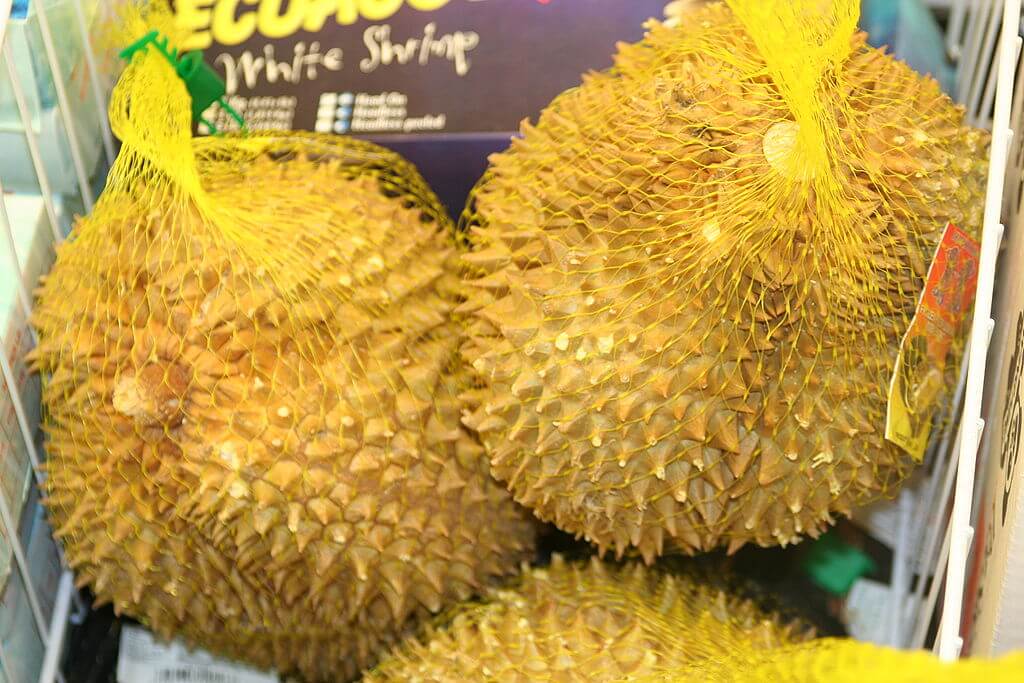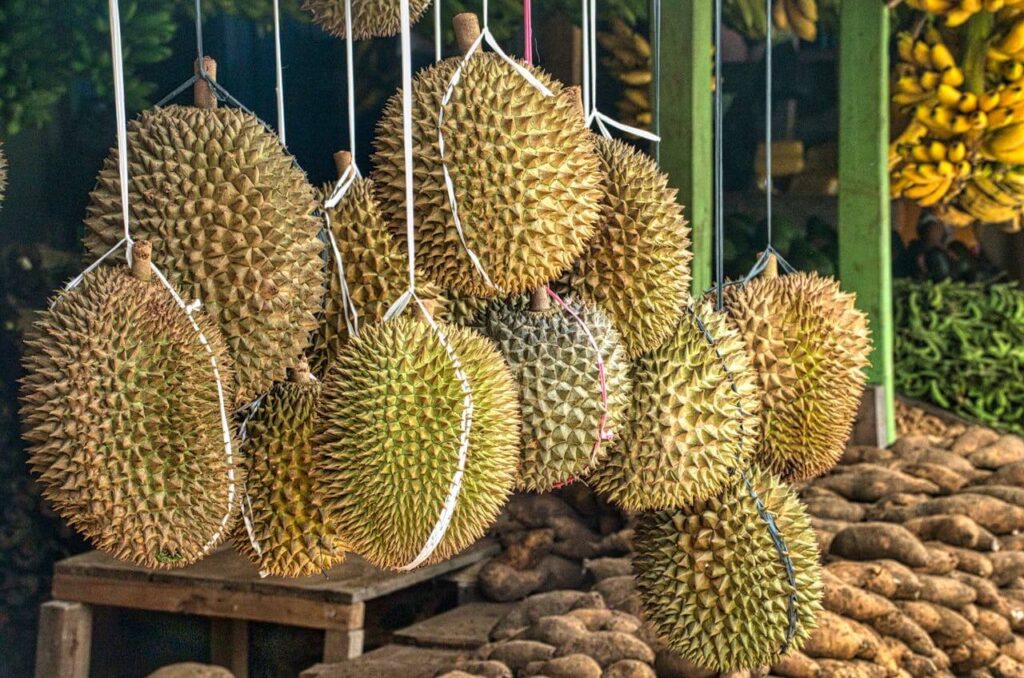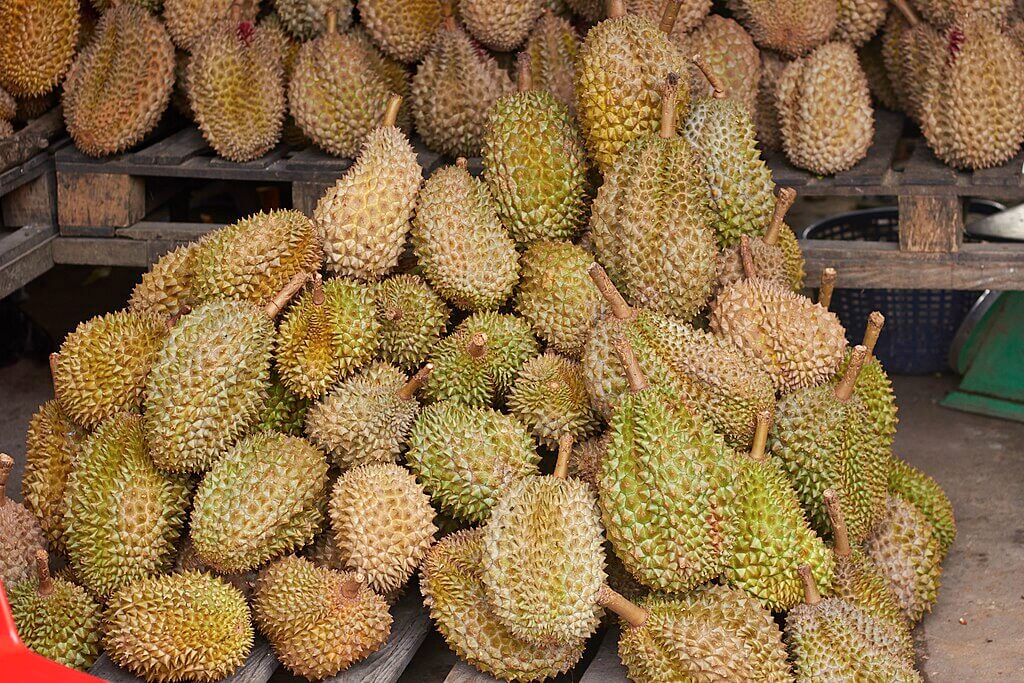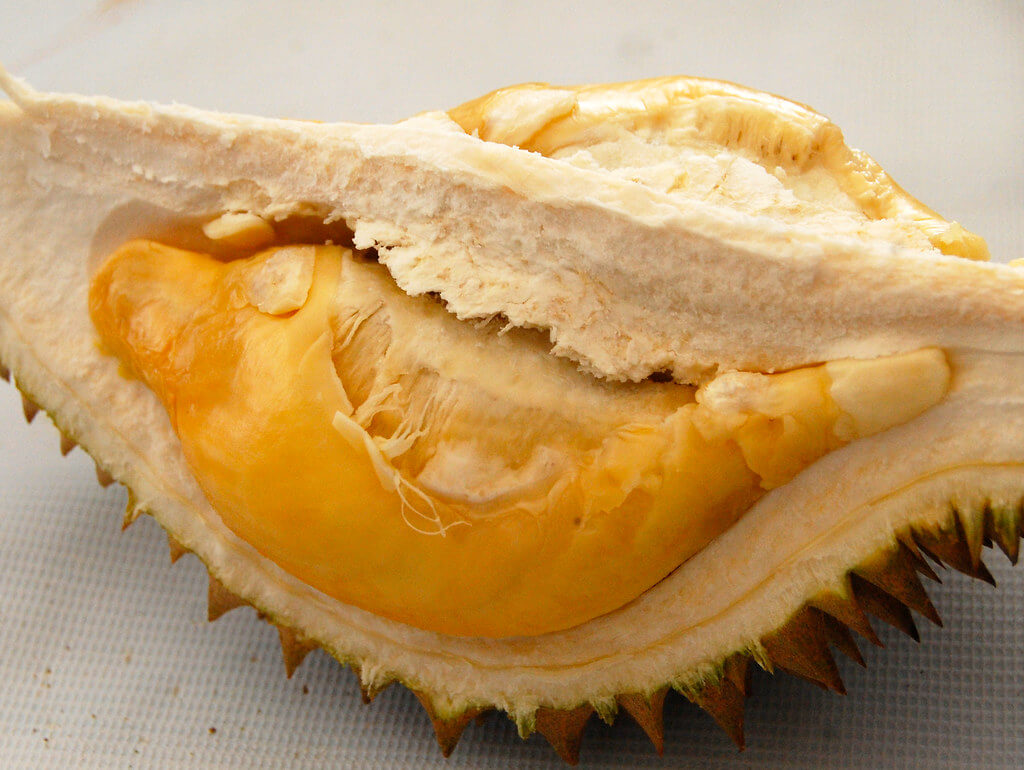When it comes to polarising fruits, Durian takes the crown. Known as the “king of fruits,” Durian evokes either deep affection or strong aversion. In Vietnam, Durians hold a special place in the culinary and cultural landscape.
The Origins of Durian in Vietnam
Durian, or sầu riêng in Vietnamese, is believed to have originated in Southeast Asia and thrives in the region’s tropical climate. Vietnam, with its fertile soil and year-round warm weather, is an ideal location for growing Durians. While neighbouring Thailand is often credited with dominating the global Durian market, Vietnam has carved its own niche, particularly in the southern provinces like Tiền Giang, Bến Tre, and Cần Thơ, where orchards are plentiful.
The fruit’s name, Sầu Riêng, translates to “one’s own sorrow,” which has sparked numerous folk tales. One legend speaks of a love story between a young couple who met tragic ends with the Durian tree emerging from their burial site.

A Distinctive Sensory Experience
Durian is immediately recognisable, thanks to its spiky green shell and strong aroma. For first-timers, the smell can be overwhelming, described as a mix of overripe fruit, onions, and, to some, gym socks. This distinctive scent has led to its ban in public places like hotels and aeroplanes in Vietnam and beyond.
However, for enthusiasts, the scent is part of its charm, signalling the creamy treasure inside. Durian flesh ranges from pale yellow to deep orange and has a rich, custard-like texture. Its flavour is equally complex, combining sweet, savoury, and nutty notes.
Explore More About Vietnam: Vietnam’s Karaoke Culture: Not Just a Pastime—It’s a Phenomenon
Durian Varieties in Vietnam
Vietnam offers a variety of durians, each with its unique characteristics:
- Ri6: One of the most popular varieties in Vietnam, Ri6 is prized for its thick, golden flesh and sweet, buttery flavour. It originated in the southern region and is a favourite among locals and export markets alike.
- Chín Hóa: Known for its strong aroma and deep yellow flesh, this variety is favoured for its intense flavour.
- Monthong: While this variety is originally Thai, it’s widely grown in Vietnam and appreciated for its milder smell and firm texture.
- Khánh Sơn: Cultivated in the central highlands, this variety has a lighter taste and is often preferred by those new to durian.

Where to Buy Durian in Vietnam
In Vietnam, especially during the durian season from March to November, you can find this spiky fruit in various places:
- Local Markets: Traditional markets are bustling with vendors selling fresh durians. In Ho Chi Minh City, areas like District 5 are known for their durian stalls. For instance, 175 Nguyen Tri Phuong in District 5 offers a variety of durians, from Thai varieties to local favourites.
- Specialty Shops: Dedicated durian shops, such as Sầu Riêng Quang Minh in Ho Chi Minh City, focus solely on durians and related treats. They often provide options for both on-site consumption and takeaway.
- Supermarkets: Major supermarket chains often stock durians, especially during peak season. These are usually pre-packaged for convenience.

Pricing and Packaging
Durian prices in Vietnam can vary based on the variety, quality, and market conditions. As of recent reports, top-grade Monthong durians are priced around VND65,000-70,000 (approximately $2.64-$2.84) per kilogram.
Prices can fluctuate, so it’s a good idea to check current rates before purchasing.
When buying durians, vendors typically offer two options:
- Whole Fruit: You can purchase the entire durian, which the vendor can open for you on the spot. They’ll often provide the flesh in a takeaway container, making it easy to carry.
- Pre-Packaged: For convenience, many places offer durian flesh that’s already been extracted and packaged. This is especially common in supermarkets and speciality shops.
How to Enjoy Durian
Eating durian is a sensory experience. Once you have your durian flesh, you can enjoy it in several ways:
- Fresh: Many enthusiasts prefer to eat durian fresh, savouring its creamy texture and complex flavours.
- Chilled: Refrigerating the durian flesh can enhance its custard-like consistency, offering a refreshing treat, especially in Vietnam’s warm climate.
- In Dishes: Durian is a versatile ingredient in Vietnamese cuisine. It’s used in desserts like durian ice cream (kem sầu riêng), sticky rice with durian (xôi sầu riêng), and durian smoothies (sinh tố sầu riêng).
Remember, durian has a strong aroma that some find overpowering. It’s advisable to consume it in well-ventilated areas and be mindful of local customs, as durian is banned in certain public places due to its smell.
Discover Related Guides: Exploring Vietnam’s Wet Markets

Tips for Trying Durian in Vietnam
If you’re new to durian or hesitant about its infamous aroma, here are a few tips for enjoying the experience:
- Start Small: Try a small piece or a mild variety like Monthong to ease into the taste.
- Pair it with Coffee: Vietnamese coffee’s bold flavour pairs surprisingly well with durian, balancing its sweetness.
- Try it in Desserts: If the raw fruit feels too intense, opt for durian-flavored desserts like ice cream or cakes.
- Visit an Orchard: Eating durian fresh from the tree is a completely different experience. Many orchards allow you to pick and enjoy the fruit on-site.
Despite its divisive reputation, durian continues to captivate locals and visitors alike in Vietnam. For some, it’s a fruit to be avoided at all costs, while for others, it’s an obsession. Regardless of where you stand, there’s no denying that durian is an essential part of Vietnam’s culinary and cultural identity.
By embracing the complexities of this “king of fruits,” you’ll gain a deeper appreciation for the unique flavours and traditions that make Vietnam such a fascinating destination. Whether you’re indulging in a fresh slice at a bustling market or savouring it in a dessert, durian offers an experience like no other.
So, are you ready to take a bite?








Could you kindly advise where I can sit to eat the durians in the Han Market Danang area?
Obviously I can’t take them into hotel room to eat.
Hi Janice, durian has a rather strong smell, and for some people it can be unpleasant, so many hotels have policies restricting or not allowing it to be eaten in the room. However, you can try the following options:
1. Ask the hotel security or reception about an area where you can eat durian. If the hotel has an outdoor café area, that would likely be a suitable spot.
2. Near Han Market, you can try heading toward Bach Dang Street. There’s a riverside walking path with plenty of benches where visitors can sit and rest (you can go near Han River Bridge — along Bach Dang Street under the bridge there are many stone benches. I think you could sit there to enjoy durian while looking at the Han River. There are also quite a few public trash bins there for disposal after eating).
I hope you’ll have a great experience in Vietnam. Wishing you a pleasant and enjoyable trip